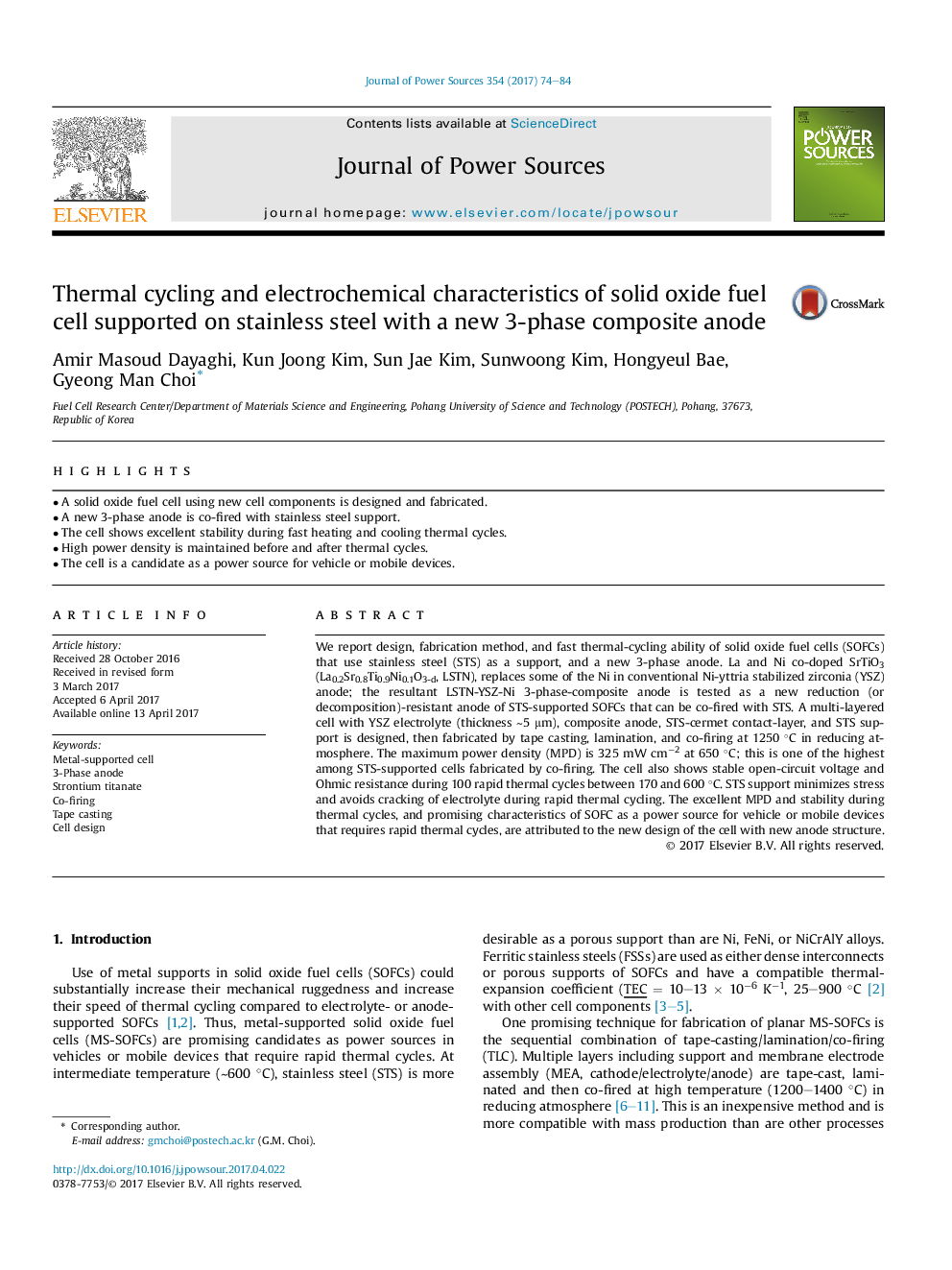| Article ID | Journal | Published Year | Pages | File Type |
|---|---|---|---|---|
| 5149352 | Journal of Power Sources | 2017 | 11 Pages |
Abstract
We report design, fabrication method, and fast thermal-cycling ability of solid oxide fuel cells (SOFCs) that use stainless steel (STS) as a support, and a new 3-phase anode. La and Ni co-doped SrTiO3 (La0.2Sr0.8Ti0.9Ni0.1O3-d, LSTN), replaces some of the Ni in conventional Ni-yttria stabilized zirconia (YSZ) anode; the resultant LSTN-YSZ-Ni 3-phase-composite anode is tested as a new reduction (or decomposition)-resistant anode of STS-supported SOFCs that can be co-fired with STS. A multi-layered cell with YSZ electrolyte (thickness â¼5 μm), composite anode, STS-cermet contact-layer, and STS support is designed, then fabricated by tape casting, lamination, and co-firing at 1250 °C in reducing atmosphere. The maximum power density (MPD) is 325 mW cmâ2 at 650 °C; this is one of the highest among STS-supported cells fabricated by co-firing. The cell also shows stable open-circuit voltage and Ohmic resistance during 100 rapid thermal cycles between 170 and 600 °C. STS support minimizes stress and avoids cracking of electrolyte during rapid thermal cycling. The excellent MPD and stability during thermal cycles, and promising characteristics of SOFC as a power source for vehicle or mobile devices that requires rapid thermal cycles, are attributed to the new design of the cell with new anode structure.
Related Topics
Physical Sciences and Engineering
Chemistry
Electrochemistry
Authors
Amir Masoud Dayaghi, Kun Joong Kim, Sun Jae Kim, Sunwoong Kim, Hongyeul Bae, Gyeong Man Choi,
